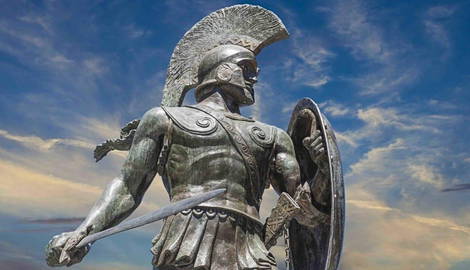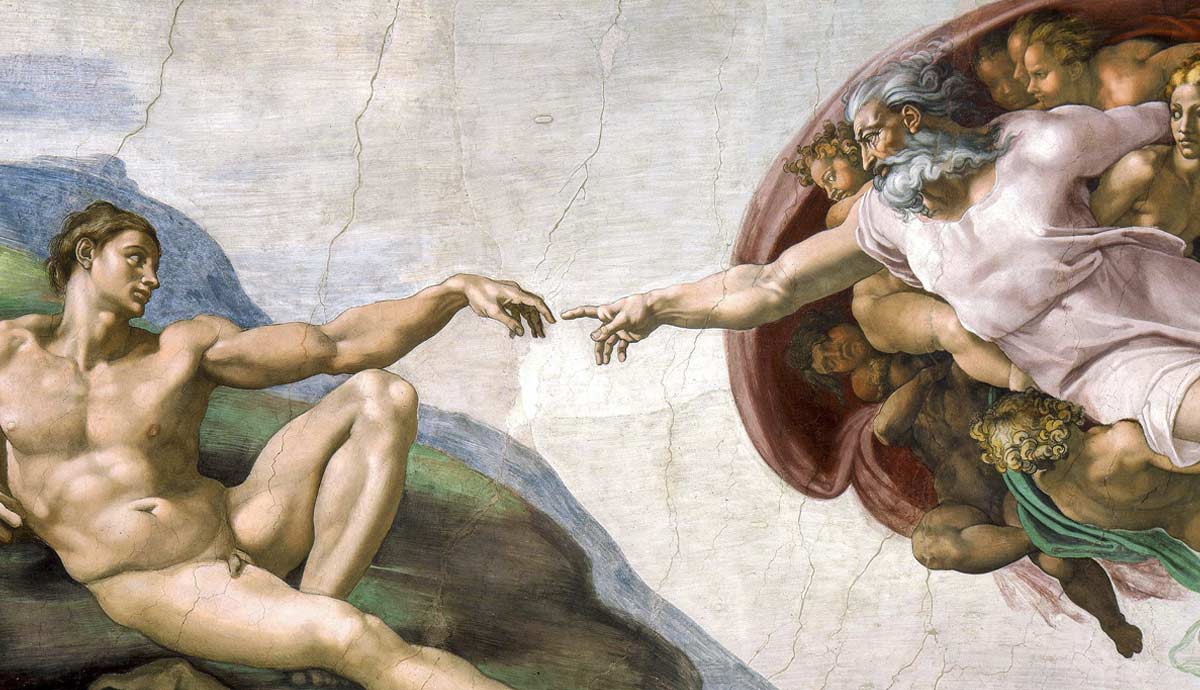
Nestled at the foot of the Taygetus mountain range in the southern Peloponnesian region of Greece, known as Laconia, is the town of Sparta. This town, now a concrete jungle of 1960s apartment and office blocks, hides an illustrious past. Over 2500 years ago, Sparta was home to the fearless Spartan warriors who for a time represented the most powerful people in ancient Greece. However, this dominant ancient town grew from humble origins. It developed gradually from a small settlement consisting of just five villages situated along the banks of the River Eurotas. In keeping with its cultural values, the town remained small and unimposing throughout the Classical period, favoring simple wooden structures over the sophisticated marble architecture of Athens.
Radical Social Reform in Sparta

Spartan artifacts dating to the 7th century BC and earlier show great skill and creativity, particularly in examples of bronze work. However, from the late 7th century Spartan society underwent dramatic changes. A new ethos was introduced which encouraged equality among citizens and an unwavering loyalty to the state. This inward focus meant that Sparta soon became an isolated city-state, which rejected imported luxuries. The mountains surrounding Laconia facilitated this isolation and enabled the city to cut itself off from the rest of Greece.
One of the many consequences of this separation was that trade routes were shut down and imported goods gradually ceased. With no external creative influence, the quality of Spartan craftsmanship suffered greatly and, arguably, never fully recovered.

Spartans believed that these social changes were introduced by a law-maker named Lycurgus. Lycurgus is a mysterious figure and no definitive details about him are known. Many historians surmise that there was a leader who implemented radical reforms at some point in the 7th century BC and that he gradually developed into a figure of legend.
Lycurgus’ reforms affected all aspects of Spartan society, including the structure of the governing bodies. A system of government developed which consisted of two kings, five leading magistrates, known as ephors, a council of 30 elders, known as the gerousia, and an assembly of male citizens, known as the ecclesia. This system was designed to promote fairness and decrease the possibility of one man gaining a position of absolute power.
Sparta and The Helots

Sparta was unique in ancient Greece for being a society that enslaved fellow Greeks, mostly from the neighboring region of Messenia. These people were known as helots and their mass enslavement was crucial to both the success and eventual failure of Spartan society.
670 BC saw the outbreak of the Second Messenian War between Sparta and Messenia. After 17 long years, Sparta was finally victorious and soon made the entire population of Messenia into state-owned slaves or helots. The helots were primarily tasked with working the land and providing produce for Spartan citizens. This, in turn, freed up time for male citizens to train in the art of war.

One major disadvantage of this mass enslavement was that the population of Sparta became heavily disproportionate, with helots outnumbering citizens by 20:1. Fear of a helot rebellion quickly grew and so a policy of brutality was implemented in order to keep the slave population in check.
At the start of each year, war would be declared on the helots and they could be legally hunted and killed by citizens for a set period. However, it is also worth noting that, unlike slaves elsewhere in ancient Greece, helots were allowed to marry and form family units. They were also allowed to keep a proportion of their produce and worship the gods.
Spartan Women

Women in ancient Sparta had a far greater level of independence than women in any other Greek city-state. This may seem strange at first for such a conservative and inward-looking society. But female independence was built on the idea that freedom led to good physical and mental health and this, in turn, led to healthy women bearing healthy children. The production and maintenance of the population of citizens was crucial to Sparta’s survival.
As a result, girls were brought up to be physically strong contributors to society. Plutarch tells us that girls were taught to run, wrestle, and throw the javelin as well as to dance and play music. Apparently, women even exercised naked, like the men. Girls were also taught basic literacy and numeracy skills in order to manage their households efficiently while the men were away at war.

Spartan women married later in life than other Greek women because they were allowed to wait until they were physically and emotionally ready. Once married, their main purpose in life was to produce children. Adultery was also encouraged as a way of increasing the citizen population.
Women in Sparta were raised to have confidence and use their voice. They were encouraged to taunt men from a young age and challenge their virility. This was believed to have the effect of increasing ambition and mental strength in men. Other Greeks were very critical of Spartan women and believed them to be promiscuous and dangerous. The Athenians are said to have given them the nickname of ‘thigh-flashers!’
Sparta’s Military Education

The large number of helot slaves in Sparta greatly increased the anxious need for military strength within the state. One of Lycurgus’ most important reforms was to reconfigure how the army was structured and trained. As a result, Sparta developed into a society which revolved almost entirely around war.
The education system in Sparta, known as the agoge, prepared boys for war from a young age. At the age of seven, boys left home and went to live in army barracks under the supervision of eirens, young Spartan men who had previously excelled at the agoge. The boys spent their time building their physical and mental strength through a series of dangerous training exercises. Only basic reading and writing were taught since it was believed that all other subjects would distract the boys from their obedience to the state.

The final stage of education was reserved for the very best young fighters who entered into the mysterious krypteia. We know little about the details of daily life in the krypteia, but it can be best described as a type of secret task force whose aim was to hunt down and kill particularly strong and able helots. Once fully trained, these young men became the elite force within an army which remained undefeated for centuries.
Why Was the Spartan Army So Successful?

One of the main reasons for Sparta’s military success was their organization and tactical awareness in battle. This can be seen most clearly in their battle formation – the phalanx. The phalanx was a rectangular formation, which lined up the men and their weapons so closely that it was impossible for the enemy to penetrate their lines.

Spartan military equipment was simple but effective. Each soldier, known as a hoplite, carried a shield, a spear, and a sword. These were shorter swords than other Greek examples since the Spartans favored close hand-to-hand combat. The hoplites wore a simple woolen cloak, dyed red to hide any bloodstains. Interestingly, they also wore their hair long to give them a larger, and therefore more frightening, stature from a distance.
The Spartans were famously relentless in battle. If an enemy force began to retreat, the Spartans would pursue them until they had been captured and killed. To surrender in battle was a fate worse than death for Spartan soldiers. There was a well-known saying which Spartan wives and mothers said to their sons and husbands as they left for battle: ‘Return with your shield, or carried on it.’
The Battle of Thermopylae

At the beginning of the 5th century BC, war broke out between Persia and Greece. The Greek city-states came together as one to repel a mass invasion led by King Darius of Persia. However, isolationist Sparta was initially reluctant to play a part in the hostilities and was conspicuously absent from the Battle of Marathon in 490 BC, which saw the Greeks notably defeat the more numerous Persians.
In 480 BC, the Persians, now led by King Xerxes, launched a second invasion of Greece. The vast Persian army was soon marching its way southwards through Greece. But along the way the Persians came to the remote and narrow mountain pass at Thermopylae. It was here that the Spartans, led by King Leonidas, played arguably their most famous role.

The Greek allies, now joined by Sparta, prepared a well-timed attack and killed many thousands of Persians in the first two days of the battle. However, disaster struck when the Greeks were betrayed by a local who showed the Persians another route through the pass. Once the Greeks discovered the betrayal, Leonidas dismissed the majority of the Greek troops and retained only his elite force of 300 Spartan hoplites. Amazingly, these 300 men managed to keep the Persian force at bay for two whole days, before succumbing to their fate.
Even though the battle ended in defeat for the Greeks, the incredible bravery shown by the Spartans provided a huge boost in morale for the Greek allies. Less than a month later the Persians were defeated at the battle of Salamis and Xerxes retreated to his palace at Persepolis.
Sparta and Athens

Less than 50 years after this historic victory, relations had soured between the former allies, Sparta and Athens. Sparta, xenophobic at the best of times, feared the growing Athenian empire, while Athens grew increasingly suspicious of Spartan military power.
In 431 BC, hostilities between the two broke into war, known today as the Peloponnesian War. The long conflict split Greece in two, with Sparta and her allies, the Peloponnesian League, on one side and Athens and her allies, the Delian League, on the other.

Many years of stalemate followed. Athens and her superior fleet of ships gained victories at sea while Sparta and her fearless hoplites gained victories on land. Much of what we know of these years comes from the account by the Athenian historian and former army general, Thucydides. However, his Athenian heritage means that we must read many of the details he provides with caution.
In the latter years of the 5th century, Sparta sought the help of her former enemy, Persia. Together they laid siege to the city of Athens. In 404 BC, Athens finally surrendered, with her city’s population starving and suffering from an outbreak of plague.
The Decline of Sparta

Ironically, it was this victory over Athens which triggered Sparta’s own decline. With Athens defeated, Sparta became the leader of a vast empire, a position to which she was hugely ill-suited. Her many years of isolation meant that this sudden interaction with outside influences and cultures had a devastating effect. Gradually Spartan society moved away from its austere life of self-discipline and towards the luxuries of the outside world.
At the same time, the city of Thebes was growing in military might and engaged in battle with the Spartans in order to seize control of the Peloponnese. In 371 BC, the Thebans defeated the Spartans at the Battle of Leuctra and freed Messenia with her thousands of enslaved helots. Within a few short years, without the workforce of slaves supporting the Spartan system, the structure of society and its military excellence crumbled away.

Ancient Sparta was a society of contrasts, one in which the qualities of loyalty and equality among the few were heavily dependent on the enslavement of the many.
The legacy of Sparta and her impact on Western civilization is perhaps less obvious than that of Athens. But it is important to acknowledge that it is largely thanks to Sparta’s fearless warriors that the culture of ancient Athens survived the threat from Persia. After all, it is Athenian culture, its democratic values, philosophy, art, and literature which have so closely shaped the Western world as it is today.










